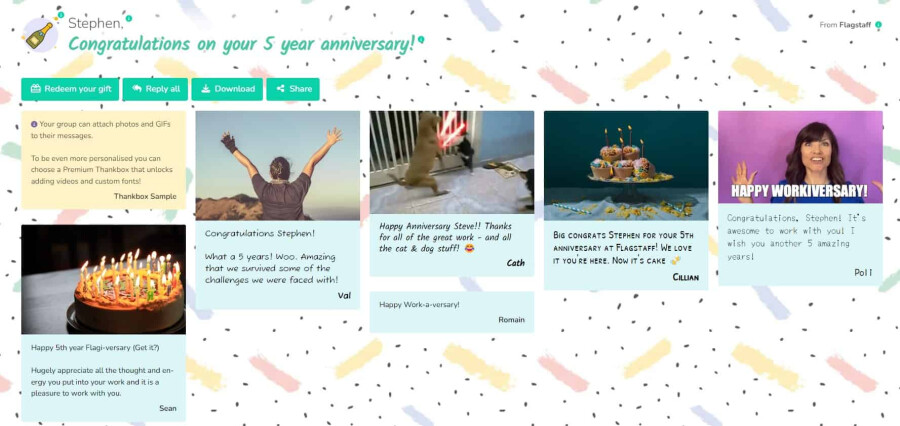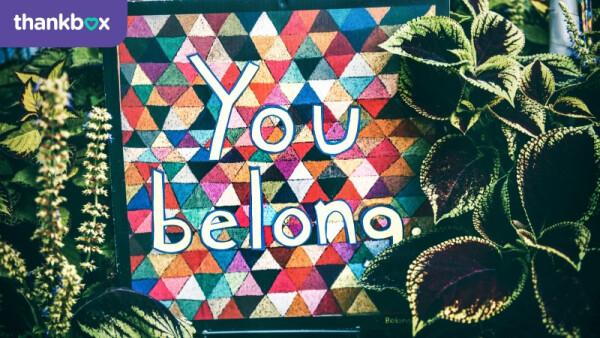Here's Our Comprehensive Guide for Using Social Media at Work


We know it sounds strange, but social media isn’t just for cat videos and funny memes—though we do have a few great ones to share! It’s a powerful tool that elevates your company from “I think I know them” to “Yes, of course I know them!”
Whether you’re sharing industry news, connecting with coworkers, or promoting your brand, social media has become an integral part of workplace communication. But like any tool, it’s all about how you use it.
Think of social media as a double-edged sword. On one side, it offers opportunities for networking and personal development. On the other, it can be a considerable distraction and even a security risk. The trick is finding the right balance.
For businesses, walking the tightrope between too much and too little is a fine art. But we’re here to help. In this guide from Thankbox, we’ll explore everything you need to know about social media at work. Let’s get started!
What is social media in the workplace?
Social media in the workplace refers to using platforms like LinkedIn, Twitter, Facebook, Instagram, and even TikTok for professional purposes—think marketing, branding, and PR. In fact, social media ads now make up nearly 30% of all digital advertising spending.
While these platforms are the giants of social media, the landscape encompasses various channels, such as internet forums, online profiles, podcasts, blogs, photo and video sharing sites, as well as text and instant messaging services.
The role of social media has changed dramatically. Companies used to restrict it, believing it would affect motivation at work. Now, those same companies encourage employees to share wins, chat with industry experts, and even join in on some light-hearted fun.
Advantages of using social media in the workplace
Better ways of keeping in touch
Social media platforms make it easy for employees to stay in touch, no matter where they are in the world.

Tools like Slack and Microsoft Teams allow team members to deliver constructive feedback, ideas, updates, and documents seamlessly, breaking down geographical barriers and time zones.
Celebrate birthdays, work anniversaries, and milestones by creating a Thankbox. Share these special moments on social media to showcase your company values and foster a positive work culture. It’s the best way to spread the love!
Networking opportunities
Networking is the unsung hero of developing strong professional bonds, and platforms like LinkedIn provide invaluable opportunities. Employees can connect with industry professionals, join relevant groups, and engage in discussions about current trends.
Networking keeps your team up to date and in the know, minimising the need to ask, “When did that happen?”
Employee morale
Welcoming the use of social media at work can significantly boost staff morale and engagement. Sharing company news, celebrating achievements, and recognising individual contributions all leads to a more inclusive workplace.
Plus, letting your team take short breaks throughout the day for social networking improves their mood, confidence, and happiness.
Brand promotion
As we said earlier, social media is a powerful marketing tool. Companies can leverage their employees’ social media presence to promote their brand, share content, and engage with a broader audience. The sky is the limit when it comes to enhancing online visibility.
Disadvantages of using social media in the workplace
We can’t fairly talk about the major advantages of social media in the workplace without acknowledging some drawbacks.
Hinders productivity
Here’s the big one—when employees have access to social media in the office, it’s easy for them to be distracted. They might spend excessive time browsing their feeds (and cat videos), quickly leading to reduced productivity and focus at work.
In fact, around 10% of workers spend a whopping 4 hours on social media a day!
Risk of oversharing

Sometimes, employees might accidentally share sensitive company information or post something inappropriate to their feed—leading to security breaches, damaging your reputation, and even causing legal problems. It's a surefire way to lose trust and clients.
Cybersecurity threats
Social media can be a playground for cyberattacks if users aren't tech-savvy. Phishing scams, malware, and data breaches (to name a few) are dangerous threats. You’ll need to stay on top of these to protect your systems.
Blurring the lines between personal and professional
It’s no secret that social media is a catalyst for anxiety and low self-esteem, and the use of social media at work can blur the lines between personal and professional. Employees may struggle to maintain a healthy work-life balance, leading to burnout and health concerns.
Tips for managing social media in the workplace
Navigating the world of social media at work can feel like walking a tightrope, but with the right strategies, you can make it work. Here are some practical tips to help you get started:
1. Set clear guidelines
Create a social media policy that outlines what’s acceptable and what’s not. Be specific about the types of content that can be shared, the times when social media use is allowed, and the appropriate platforms for work-related activities.
Educate employees about your guidelines via training sessions, workshops, or educational resources. After all, you need everyone on the same page.
2. Encourage professional development
Use social media as a tool for learning. Encourage employees to follow industry leaders, join professional groups, and participate in relevant discussions. This keeps your team up-to-date on the latest trends while helping to enhance job satisfaction.
3. Promote balanced use

Urge your team to take short, scheduled breaks from social media during the day rather than using it non-stop. This can help improve their mood and productivity without letting online platforms become a significant distraction.
Tools like the Pomodoro Technique, which involves working for 25 minutes followed by a 5-minute break, is a great way to help them stay productive at work.
Celebrate birthdays, work anniversaries, and milestones by creating a Thankbox. Share these special moments on social media to showcase your company values and foster a positive work culture. It’s the best way to spread the love!
4. Use disclaimers
If employees mention your business on their personal profiles, they should include a disclaimer stating that their opinions do not reflect the company’s views. Add this to your initial guidelines–trust us, it goes a long way in protecting your brand’s integrity.
5. Implement social listening tools
Invest in social listening tools to monitor your brand’s online presence. These tools can help you quickly respond to customer feedback, track trends, and identify potential issues before they escalate.
It’s a proactive way to manage your company’s reputation and stay connected with your audience.
Maximise your social media strategy with Thankbox
When it comes to leveraging social media, Thankbox is a game-changer. Simply share our online group greeting cards on your company’s social media platforms to celebrate team achievements, work anniversaries, birthdays, or simply to say “Thank you.”

Sharing these moments with a wider audience is the perfect way of highlighting your company culture and values. Each and every member of your team can contribute personalised messages, GIFs, photos, and even video messages to our unique e-cards.
And if you’re looking for something truly memorable, we even offer flower delivery and digital gift cards.
Thankbox helps promote a positive work environment by making it super easy to celebrate your team. Ready to elevate your social media game? Create a Thankbox today and get started.
Images: Cover | Young female having video call on city street | Cheerful man in a video call | Bearded man in a coffee shop talking to a woman





